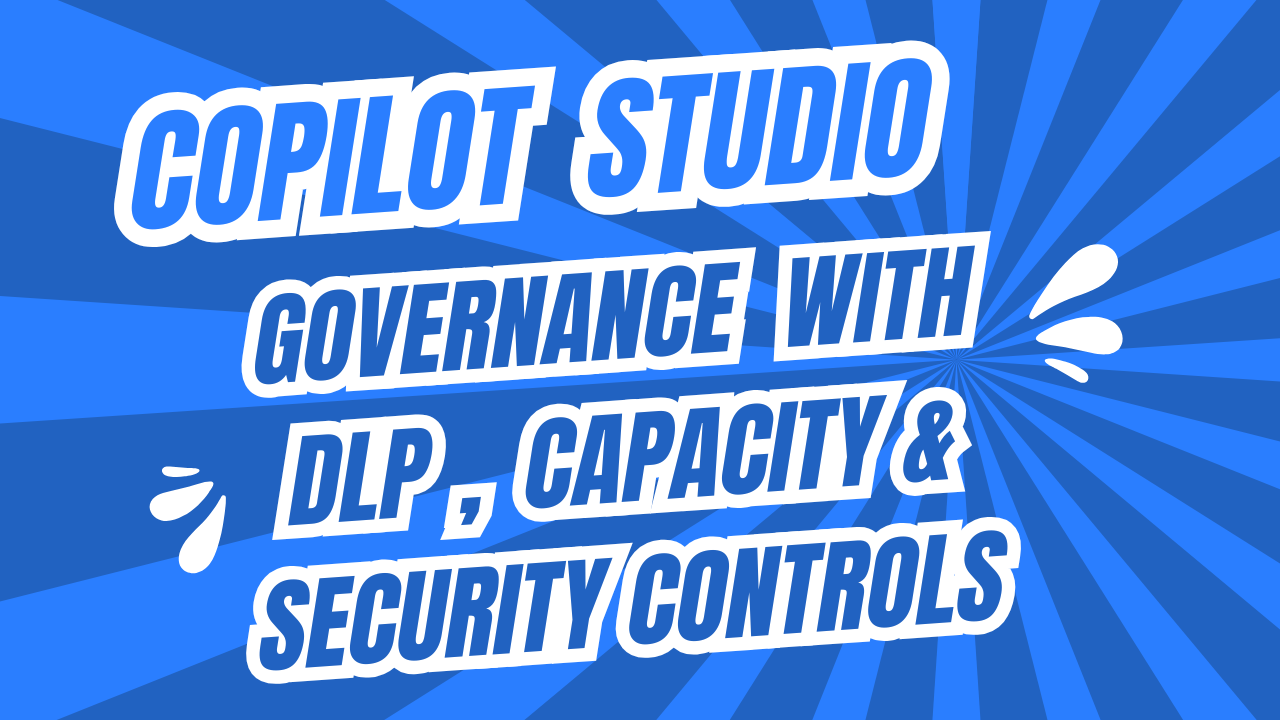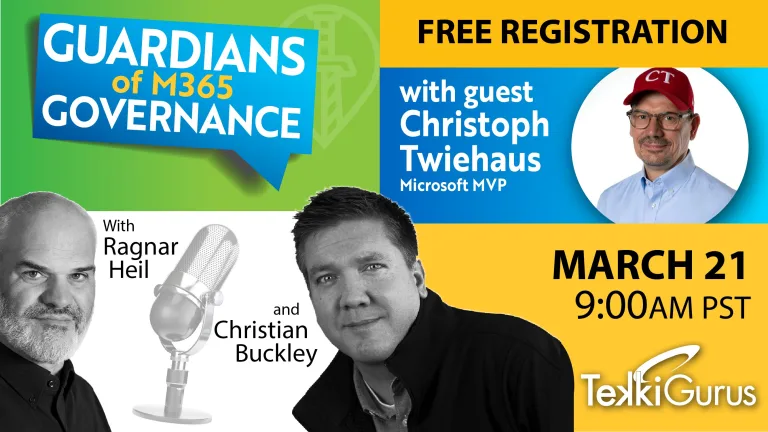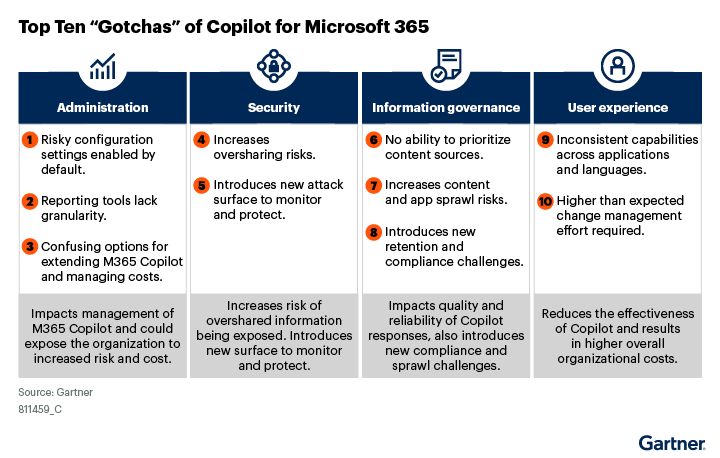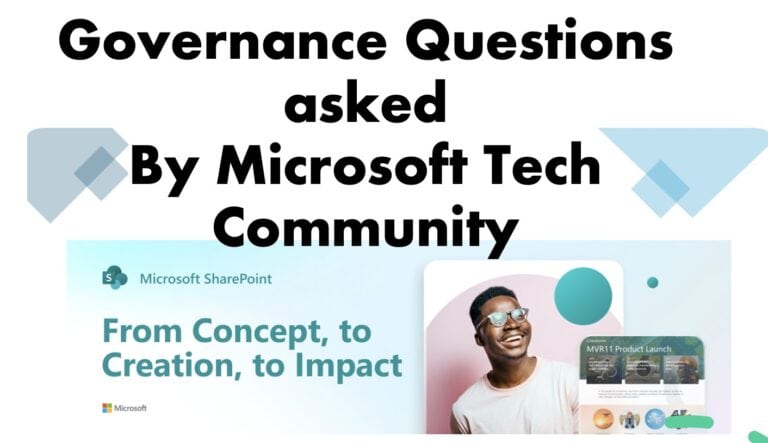From Chaos to Control—Governance Best Practices for Microsoft Copilot Studio with DLP, Capacity & Security Controls
Let’s talk about governance. I know, I know – it sounds about as exciting as watching paint dry. But here’s the thing: Microsoft Copilot Studio is powerful. Really powerful. And with that kind of power comes… well, you know the rest. The responsibility to not let things spiral into complete chaos.
The latest episode of the “Copilot Studio Administration, Security, and Governance Series” dives deep into the nitty-gritty of tenant and environment-level configurations. It’s the kind of stuff that helps organizations move from “Wait, who deployed what?” to “We’ve got this under control.” And honestly, it’s worth your time.
Why should you care?
Because without purposeful settings, your Copilot deployment can become a bit of a Wild West situation. We’re talking DLP (Data Loss Prevention) policies and the Power Platform Admin Center – the real control towers for your security posture, operational efficiency, and data privacy. These aren’t nice-to-have features. They’re the foundation.
The Controls That Actually Matter
Let me walk you through what’s really important here:
Message Capacity Allocation: Think of this as your budget manager. You set quotas for how many messages each environment can consume. No more surprise overruns when someone in dev goes a bit trigger-happy with testing.
Telemetry/AppInsights Control: Here’s where you block makers from connecting Copilot agents to Application Insights. Why? Because telemetry data can be sensitive, and you don’t want it floating around where it shouldn’t be.
Authentication Restrictions: This one’s non-negotiable. Disable the dodgy options like “No-Auth” and “Generic OAuth.” Seriously. There’s no good reason to keep these enabled if you care about security.
Channel Access Controls: Limit where your agents can show their faces—Teams, Direct Line, Facebook, OmniChannel. The fewer channels, the fewer potential data leaks. Simple as that.
Knowledge Source Governance: Restrict what your agents can learn from. SharePoint, OneDrive, public websites, random documents—you need to control this. Otherwise, you’re opening the door to some seriously risky knowledge connections.
Skills Usage Control: Not every maker needs access to every skill. Disable the ones that aren’t necessary. It minimizes the risk of someone accidentally (or intentionally) doing something they shouldn’t.
HTTP Request Restrictions: Block agent HTTP requests to external destinations. This is about preventing data exfiltration. You don’t want your data sneaking out the back door.
Event Trigger Controls: Autonomous, event-driven triggers sound cool until an agent starts doing things you didn’t authorize. Disallow them unless you have a very specific use case.
What You Should Actually Do
Here’s what works in practice:
- Only give Power Platform Admin roles to people you absolutely trust. This isn’t a role you hand out like candy.
- Review your DLP policies regularly. Not once a year—regularly. Threats evolve. Your policies should too.
- Block generic authentication and open channels by default. Only open them for specific, documented use cases.
- Keep knowledge sources internal and audited. Public websites as sources? That’s a hard no unless you have a really good reason.
- Audit your published agents periodically for compliance. Make it part of your routine.
- Use capacity management strategically—allocate different resources for test, dev, and production. Your budget will thank you.
The Overview Table
| Control Area | What It Does | Best Practice Example | Why It Matters |
|---|---|---|---|
| Message Capacity | Sets usage quotas | Lower limits for dev envs | Prevents overuse |
| Telemetry/AppInsights Control | Blocks external logging | No agent connections to AppInsights | Protects data privacy |
| Authentication | Restricts auth methods | Disable No-Auth/Generic OAuth | Reduces breach risk |
| Channel Access | Limits where agents appear | Enable Teams only when needed | Lowers exposure |
| Knowledge Source | Controls what agents learn from | Use SharePoint, block public sites | Prevents leaks |
| Skills Usage | Manages agent capabilities | Disable non-essential skills | Tighter control |
| HTTP Requests | Prevents data exfiltration | Block untrusted destinations | Keeps data safe |
| Event Trigger | Controls execution | Disallow autonomous triggers | Avoids accidents |
The Bottom Line
Tenant-level DLP, authentication controls, channel restrictions, and knowledge governance aren’t just checkboxes on a compliance form. They’re the foundation of a solid Copilot Studio setup. Apply these settings methodically, and you’ll see real results: better operational efficiency, stronger data privacy, and compliance that actually holds up when regulators come knocking.
Make regular reviews and audits part of your routine. Embrace the principle of least privilege. And for the love of all things holy, don’t give everyone admin access.
That’s your Copilot Studio governance strategy in a nutshell. Now go make it happen.
Talk to us at HanseVision about your requirements and questions about Power Platform, M365 Governance, Copilot (Studio) and Agents Governance!
Find my Calendar here and check out our OnePager about M365 Governance.







I have read many articles trying to understand Security in Copilot Studio. None of them have been as practical, clear and fun as this one. I loved it.